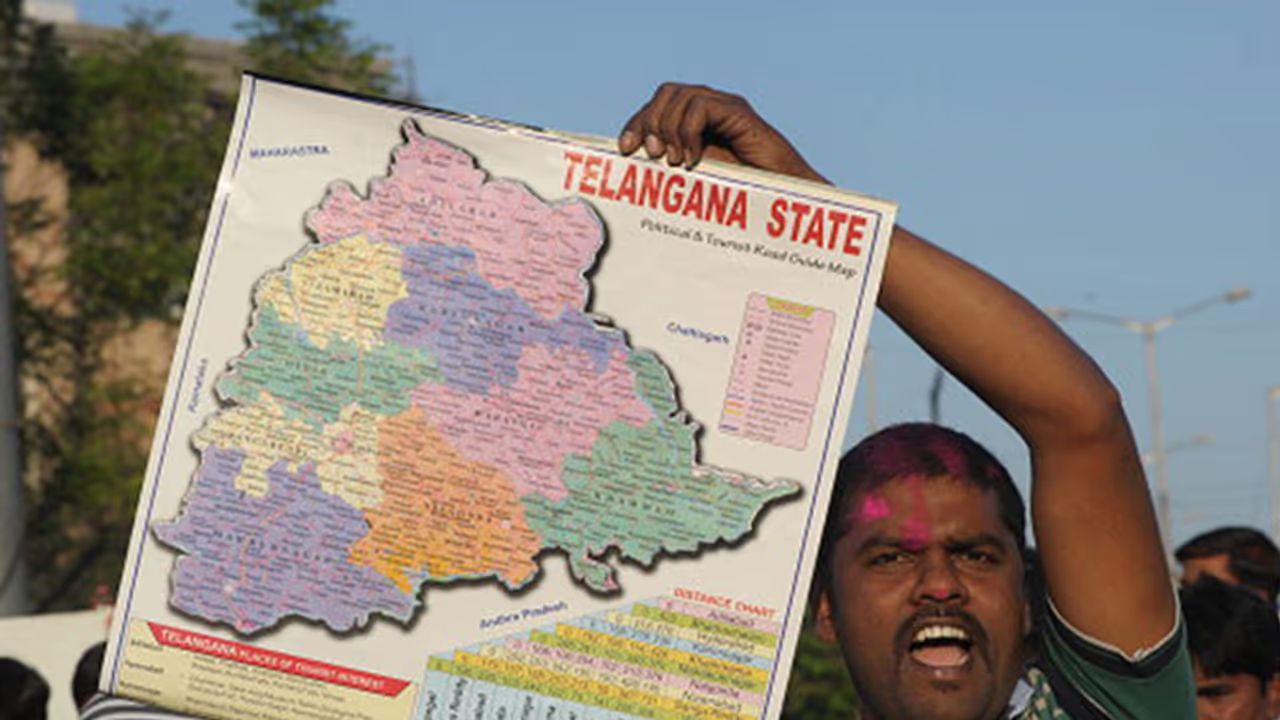Telangana's new districts will shrink a Collector's area to the size of a small revenue division. But the new districts are not expected to improve the administration significantly.
Shattering the ivory tower built around the 'elusive royalty' of the person sitting in a sprawling colonial district headquarters, Telangana Chief Minister K Chandrasekhar Rao (KCR), with one pen stroke, is setting in motion the process of 'commonization' of the District Collector and Magistrate (C&M).

On Vijayadasami a.k.a October 11; KCR will inaugurate 21 new districts, each one-third of the size of the present district, bringing the number of districts in the new state to 31. The area of operation of the 'ruler of the district' will shrink to the size of a small revenue division, which, according to many senior members of the coveted service, is going to affect the office functionally and psychologically influence the holder of the office.
C&M's in the new state will become more visible to the commoners of small towns like Nagarkurnool, Peddapalli, Jangoan etc. The Collector’s office is coming so near to the people that by spending Rs 40 as bus fare, anybody can go to the nearby Collector’s office with a grievance.
The Collector, who is a most powerful officer in the Indian civil administrative setup, also has to share space with junior officials and grass-root level political leaders in the towns where modern facilities are minimal or absent.
There is an almost unanimity among many senior officers that the creation of new districts will not improve the administration or governance significantly. Because, they say, Telangana is not attempting to strengthen the management by devolving powers to grassroots level organisations.
A special chief secretary rank officer from the state cited Odisha as an example. "Biju Patnaik increased the districts from 10 to 30. He also appointed state service officers as collectors which the Centre (DoPT) opposed. Ultimately, the number of districts had gone up without any commensurate improvement in the governance," he said and added that devolution of many powers to the grassroots level did not take place.
Among the recently carved out new states - such as Jharkhand, Chhattisgarh and Uttaranchal, Telangana is the first to create more districts.
According to another serving IAS officer, who doesn’t want to be quoted, the step will increase the political interference in the administration. He feels ruling party leaders will start knocking at the doors of the Collectors for favours, who are just a few miles away all the time.
"Earlier, the C&M was a bit insular as he was sitting in a far-off district headquarters controlling two layers of officers - namely RDO and MRO. Proximity and too much political interaction are bound to dismantle the relative isolation of the C&M, which makes the position vulnerable to corruption," he felt.
Md Shafiquzzaman, a 1977 batch IAS veteran, foresees more deterioration rather than improvement with the change.
"The office of the Collector and Magistrate is already facing erosion as an impartial institution. As per the rule, the C&M is expected to receive and see off only the CM and revenue minister at the border of the district. He is not supposed to meet ministers unless there is a special request. This arrangement is made to ensure that Collector is not reduced to the level of a protocol officer. What is happening is exactly the opposite," he said.
There is also a danger that the smaller geographical area of the district would make the District Collector’s office a hub of political activity. This is the downside of smaller districts, Shaffiquzzaman said.
While bringing the district collector closer to the people, it also increases the control of the Chief Minister and Chief Secretary. This is liable to make administrative supervision cumbersome, he said.
"The CM or Chief Secretary has to deal with 31 collectors in the place of 10 now. As trained and talented officers are not available, and the government has to depend on whatever workforce is available, mediocrity is bound to creep into the administration," he said.
Another retired official is of the opinion that the commonization of collector’s office is welcome because it would bring down the ego of the person holding the office.
"The fact that the Collector has to administer a small area will bring down the ego of an IAS officer, who was earlier used to a vast area. There were times when subordinate officials used to keep the road clean and mark it with white lines during Collectors’ visits. In cinema halls, two rows of seats used to be held vacant to prevent congestion for Collector during movie watching. The practice is gone. Now with the present change, IAS officers have to learn to live among commoners. It's a welcome change in a way," he said.
He, however, admitted that the arrogance of the IAS babu would probably remain as the step is not going to dilute the powers and authority of the District Collector and Magistrate.
